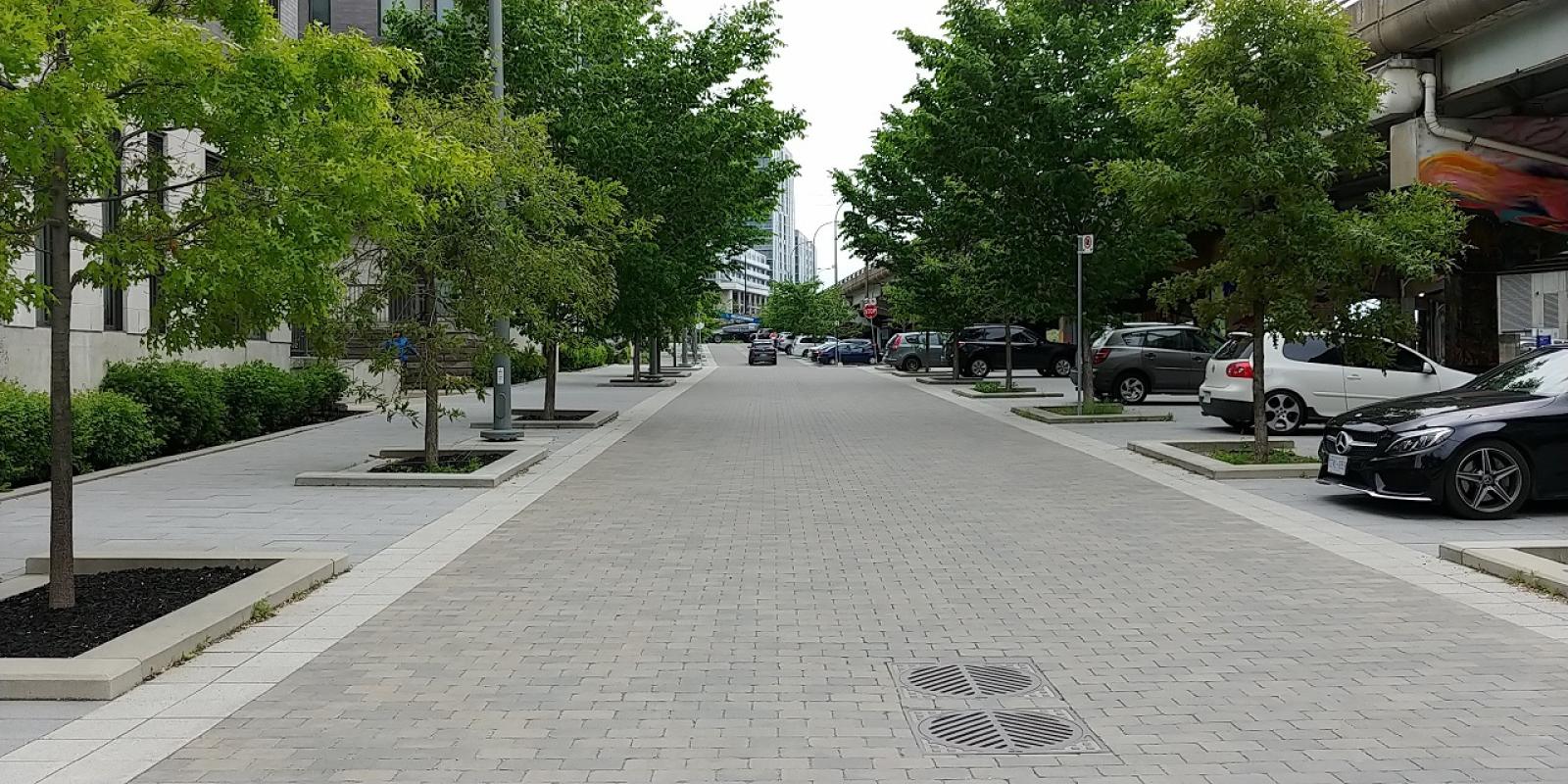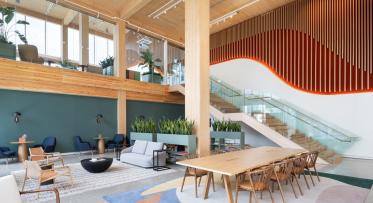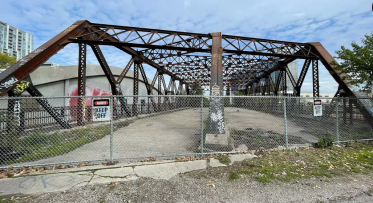Refinements Coming to Trolley Crescent
Following public feedback, we are introducing design refinements on Trolley Crescent to ensure all types of users know how to navigate the space safely and intuitively.
POSTED: SEPTEMBER 13, 2021 I COMPLETE STREETS, INFRASTRUCTURE, DESIGN, PARKS AND PUBLIC SPACES
By: Sarah Askett
Waterfront Toronto is beginning work to implement new design solutions on Trolley Crescent. After issuing a public survey to solicit feedback on proposed design solutions on Trolley Crescent in December 2020, the final design refinements to the woonerf were determined using the feedback we received from the public survey. The survey also served as an opportunity to learn how people use Trolley Crescent.
Trolley Crescent was the first woonerf introduced in Toronto in 2014. It was a new concept in Toronto that has experienced remarkable success in Europe, particularly in the Netherlands. Woonerfs are an innovative approach to street design that give priority to pedestrians. To achieve this, instead of curbs and sidewalks, specially designed paving is used to encourage vehicles and cyclists to slow down and consider other users of the space.
Based on how this space has been used over time, information shared by local residents with Waterfront Toronto and Councillor Wong-Tam's office and responses to a public survey in December 2020, we are implementing design solutions to ensure that everyone uses the woonerf properly. These solutions will help reduce illegal parking in areas meant to be used by pedestrians, which in some cases has damaged adjacent landscaping.
New Design Refinements
In order to improve safety and experience for the variety of users along Trolley Crescent, strategic design refinements are being implemented. The majority of public survey respondents felt these design solutions would help mitigate driver confusion while also improving the pedestrian and cyclist experience.
Following are the new design elements being implemented on Trolley Crescent.
Bike rings – 38 new bike rings will be installed between the roadway and pedestrian walkway along Trolley Crescent to prevent drivers from entering and parking in areas where vehicles should not go.
Signage – 17 City of Toronto signs are being strategically placed between the roadway and pedestrian walkway in locations where illegal parking has been an issue. The new signs will clearly mark where parking is permitted, identify areas that are designated for pick-ups and drop-offs and where parking is prohibited.
Fixed and removeable bollards - 28 fixed bollards will be added along the curved corners of the woonerf to prevent drivers from entering areas where cars are not permitted and protect landscaping from damage. Seven flexible bollards will be installed in areas near Underpass Park that can be removed for temporary vehicle access.
Benches – Five additional benches - matching those found along nearby streets and parks - will be placed along the curved portions of the woonerf and on the eastern edge of Trolley Crescent facing Bayview Avenue to make it clear this is not a place for vehicle parking and also provide casual seating to enjoy the view across the Don River.
Armourstone and riverstone – In addition to the benches that will be added to the eastern edge of the woonerf, armourstone and riverstone will further clarify the area is not for parking and help prevent the often muddy conditions caused by illegal parking.
These additional design elements will improve upon what already exists at Trolley Crescent, and contribute to a better, safer experience for all users of this space.




